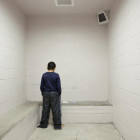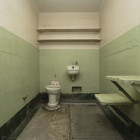
Solitary Confinement, Beloved by Lazy Staff, Simply Doesn’t Work
|
In 2012, the U.S. Attorney General appointed a national task force on children exposed to violence that concluded, “Nowhere is the impact of incarceration on vulnerable children more obvious than when it involves solitary confinement.” This statement still holds true and solitary confinement bears an even heavier impact on incarcerated youth today.








